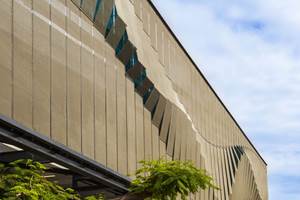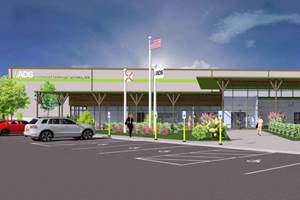Construction to See Moderate Growth
Market Watch
Plastics part production for commercial and residential construction should remain solid through 2015.
Leading indicators for residential construction were sending mixed signals when we last looked in December 2014. Depending on how you viewed the data, construction would either continue growing at a slower rate or bottom out very soon.
As it turned out, the construction market did indeed bottom, but it has been growing at an accelerating rate for a couple of months. Year-to-year, housing permits have been growing at an accelerating rate in the first three months of 2015. The rate of growth should accelerate in the second quarter because the most recent data is growing faster than the current annual rate of growth. Compared with a year ago, the monthly total of housing permits has increased in four consecutive months. And in three of those four months, the rate of growth has been more than 7.5%.
Total construction spending, which includes commercial, residential, and governmental, has seen its annual rate of growth accelerate in the last two months. The current rate of annual growth is 5%, which should improve significantly in the upcoming months. In February and March, the one-month rate of change in total construction spending was more than 12%. The last time the month-over-month rate of change grew this quickly was in May 2012. The data shows that the non-residential construction market is growing faster than the residential construction market.
The outlook for at least the next quarter appears to be positive. The change in the real 10-yr Treasury bond rate was trending down from mid-2013 through the end of 2014. That’s important because lower interest rates make construction projects more affordable. Also, consumer spending has been growing at a steadily accelerating rate since mid-2012. So the trends in these two areas over the last 12 to 24 months indicate that construction spending should see even faster growth over the next quarter or two.
That said, the leading indicators have started to change direction in the last couple of months. The real 10-yr Treasury rate was 0.79% in March, the second month in a row that it has risen. And it was the second month in a row that the change in the rate has increased. One reason that the change in the real Treasury rate has increased is that the nominal 10-yr interest rate has increased in the last two months. The second reason is that inflation, according to the Consumer Price Index, has been negative for three straight months. This is significantly below the inflation rate of the last five years. With very low or negative inflation and a rising yield, it is likely that the change in real 10-yr Treasury rates will continue to increase. This would be a negative sign for construction.
Consumer spending is a leading indicator of total construction spending. The rate of growth already noted is unlikely to continue for very long. Monthly data is already growing at a slower rate. And disposable income is growing at a decelerating rate too. That will lead to slower growth in construction.
The conclusion is that plastics part production for commercial and residential construction should remain solid through 2015. But the leading indicators for the construction market are pointing toward a peak in late 2015 or early 2016.
Related Content
Architectural Mesh Made from Covestro’s Bioattributed PC
Kaynemaile’s new RE8 Architectural Mesh will deliver an ISCC Plus certified sustainable share of up to 88% of its architectural product.
Read MoreInfrastructure May Prove Big Landing Spot for Recycled Plastics
As the government funds infrastructure improvements, a hot topic at NPE2024 – exploration of the role recycled plastics can play in upcoming projects, particularly road development.
Read MoreEV Chargers Made From Renewable PC
SABIC is enabling Charge Amps to manufacture electric vehicle (EV) chargers with a housing made from certified renewable PC, a first for the industry.
Read MoreAdvanced Drainage Systems to Build New Florida Manufacturing Facility
New manufacturing facility will complement other ADS facilities in the southeast region.
Read MoreRead Next
Making the Circular Economy a Reality
Driven by brand owner demands and new worldwide legislation, the entire supply chain is working toward the shift to circularity, with some evidence the circular economy has already begun.
Read MoreLead the Conversation, Change the Conversation
Coverage of single-use plastics can be both misleading and demoralizing. Here are 10 tips for changing the perception of the plastics industry at your company and in your community.
Read MorePeople 4.0 – How to Get Buy-In from Your Staff for Industry 4.0 Systems
Implementing a production monitoring system as the foundation of a ‘smart factory’ is about integrating people with new technology as much as it is about integrating machines and computers. Here are tips from a company that has gone through the process.
Read More
.JPG;width=70;height=70;mode=crop)











